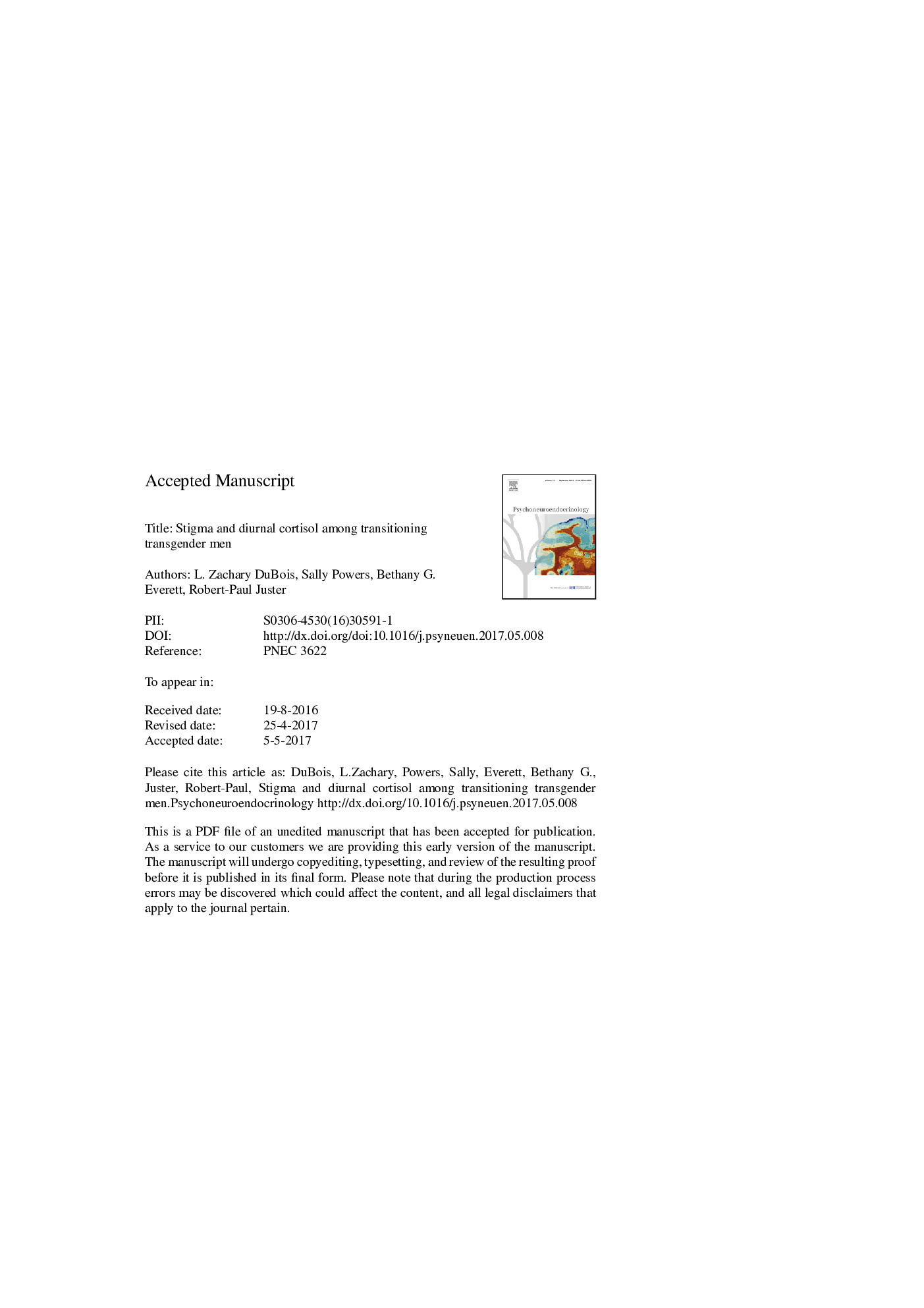| Article ID | Journal | Published Year | Pages | File Type |
|---|---|---|---|---|
| 4934378 | Psychoneuroendocrinology | 2017 | 33 Pages |
Abstract
This study assessed diurnal cortisol functioning in relation to stigma-based transition-specific stressors experienced by transgender men during their transition from female to male. Sixty-five healthy transgender men undergoing testosterone therapy participated in in-person interviews through which transition-specific stressors were identified. Interviews were coded according to participant reported (1) Transitioning-identity stress; (2) Coming Out stress; (3) Gender-specific Public Bathroom stress; and (4) levels of general Perceived Stress. Participants provided fifteen salivary samples assessing cortisol diurnal rhythm over three days. Hierarchical linear models, adjusted for duration of time on testosterone therapy, body mass index, steroid-related medication use, mean awakening time, and CAR, confirmed that elevated diurnal cortisol levels at awakening were associated with transition-specific social stressors including experiencing Transitioning-identity stress, frequent Coming Out stress, and Gender-specific Public Bathroom stress. Transitioning-identity stress and Gender-specific Public Bathroom stress also predicted a steeper negative slope at awakening. General Perceived Stress was not associated with elevated cortisol or slope. These results clarify the relation of increased cortisol at awakening with a negative linear slope to perceived stigma and transition-related stress experience among transgender men.
Related Topics
Life Sciences
Biochemistry, Genetics and Molecular Biology
Endocrinology
Authors
L. Zachary DuBois, Sally Powers, Bethany G. Everett, Robert-Paul Juster,
